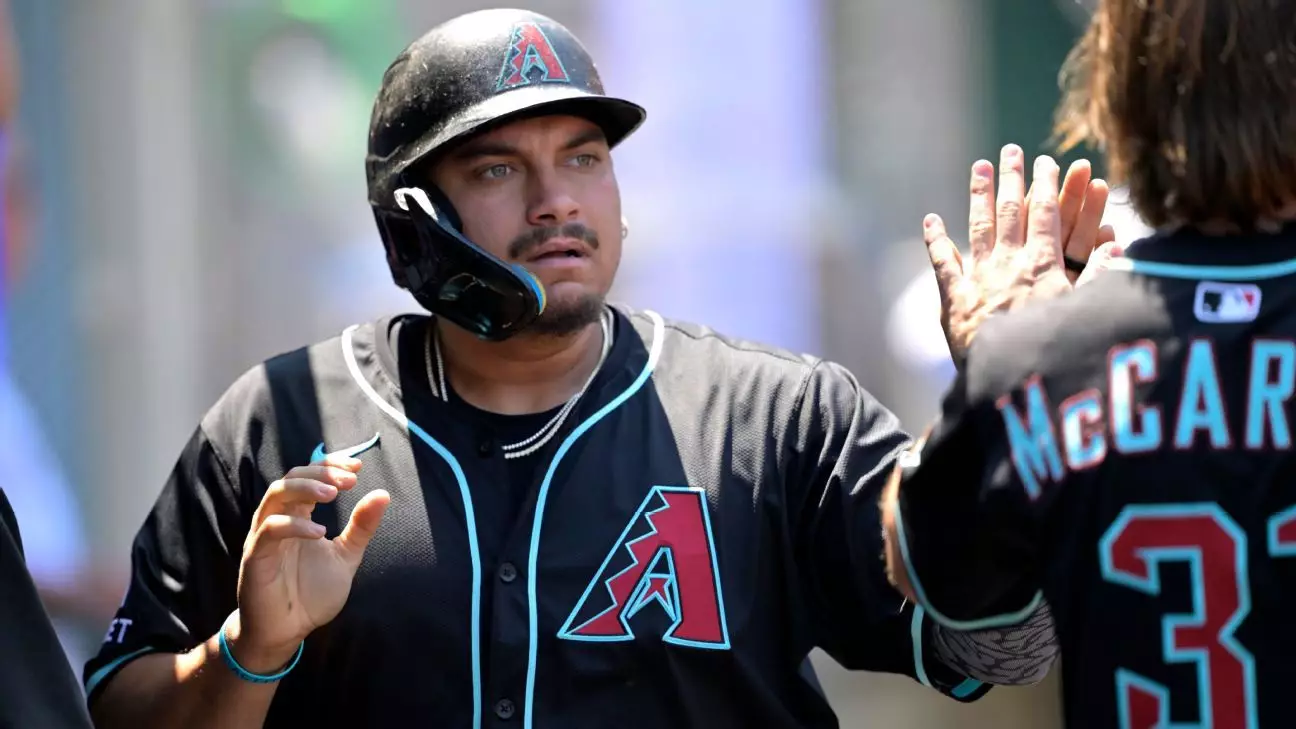In a clear demonstration of their ambition, the Seattle Mariners have made a significant statement by acquiring powerhouse first baseman Josh Naylor from the Arizona Diamondbacks. This move isn’t just about adding a player; it reflects Seattle’s aggressive stance heading into the trade deadline and their relentless pursuit of postseason success. By bringing in Naylor, a player known for his offensive consistency and emotional intensity, the Mariners are positioning themselves as serious contenders in the American League. They are not content with mere mediocrity; they want to break their long-standing playoff drought and reassert themselves among baseball’s elite.
This trade reveals much about the Mariners’ front office philosophy. Unlike teams that heavily lean on prospects or favor cautious, incremental adjustments, Seattle appears willing to make bold, impactful moves. Their decision to part with promising pitching prospects—Brandyn Garcia and Ashton Izzi—demonstrates confidence in their existing roster and a focus on immediate results. Such moves suggest a calculated risk taken with clear objectives: maximize their chances of a deep postseason run now rather than waiting for future seasons.
Meanwhile, the Diamondbacks’s willingness to part with valuable players like Naylor underscores a broader trend among contenders to capitalize on the current market. Arizona’s front office, knowing that several of their key players—like Eugenio Suarez, Merrill Kelly, and Zac Gallen—are potential trade chips, is casting a wide net. This strategy aligns with their apparent goals of retooling for sustained competitiveness, even if it means losing seasoned veterans who can contribute right now.
Naylor’s Impact and the Price of a Win
Josh Naylor, at the age of 28, epitomizes the modern, power-hitting first baseman who combines offensive production with low strikeout rates, making him an attractive asset for playoff-bound teams. His recent performance—hitting .292/.360/.447 with 11 home runs in 93 games— speaks to his ability to deliver under pressure. His career metrics add layers to his appeal; with a .267/.329/.444 line and 95 career home runs, Naylor has proven he can be a consistent source of offense across multiple seasons.
What makes Naylor particularly appealing is his versatility on the diamond. He has accumulated over 100 games as a designated hitter, suggesting that Seattle might utilize him in different roles to optimize their lineup. His emotional displays on the field hint at a player who is invested and motivated—a trait valuable for teams in a playoff chase. Yet, it’s his low strikeout rate that stands out: in an era dominated by strikeouts, Naylor’s approach at the plate is refreshing and potentially vital for a team seeking offensive stability.
The trade also exemplifies the rising trend of assessing value beyond traditional statistics. Teams now place a premium on controllable assets like Naylor’s ability to contribute both offensively and defensively while maintaining a high on-base percentage. Seattle’s acquisition signals that they’re betting on his ability to provide clutch hits and energy, qualities that can energize a clubhouse and impact playoff games.
Prospect Values and Future Potential
Seattle’s decision to trade prospects like Brandyn Garcia and Ashton Izzi illustrates a broader understanding of talent valuation. Garcia, a left-handed pitcher with a fiery fastball and impressive strikeout numbers, demonstrated promise as both a starter and reliever, highlighting his versatility. The Mariners’ confidence in flipping him into a more impactful role underlines their commitment to immediate success rather than long-term development.
Ashton Izzi, a younger pitcher with a promising but still maturing arm, offers potential future value but isn’t viewed as an essential piece for Seattle’s current postseason ambitions. This selective approach underlines a strategic trade-off: endure short-term sacrifice for long-term stability. The Mariners are clearly enhancing their roster to compete now, even if it means parting with prospects with significant upside.
On the other side, Arizona’s dealmaking signals a different mindset. Their core of talented outfielders and infielders remains intact, but they’re clearly eyeing the potential for a rebuild or retooling, particularly with impending free agents like Kelly and Gallen. Their willingness to trade away a player like Naylor indicates a focus on resetting the market and making strategic moves to secure future assets. It’s a testament to a system that values flexibility and shrewd asset management over resting on past glories.
Market Dynamics and Long-term Strategies
The landscape of this trade season is a mix of short-term urgency and long-term planning. Seattle’s aggressive gamble—sacrificing prospect depth to strengthen their roster—reflects confidence that they can contend right now. Their recent victory over the Angels and proximity to the postseason underscores that they believe they are on the cusp of something special.
Meanwhile, Arizona understands that the trade market is a game of patience and negotiation. With key players potentially leaving in free agency, they’re attempting to stay flexible, bolstering their roster with young talent and prospects who can be developed or traded later. Their core remains competitive, but they are aware that preserving flexibility could yield bigger gains down the line.
This balancing act between immediate contention and future planning is at the heart of modern baseball strategizing. Not every team can afford to be patient; many must seize opportunities when they arise. The Mariners’ bold move exemplifies a team willing to take calculated risks, betting that their current roster has what it takes to make a deep postseason run.
The trade deadline continues to act as a crucible, exposing team philosophies and propelling the league’s blue-chip contenders into a new competitive era. Seattle’s audacious approach might be the spark that ignites a championship push, and if successful, it could redefine what it means to aggressively chase greatness in Major League Baseball.

